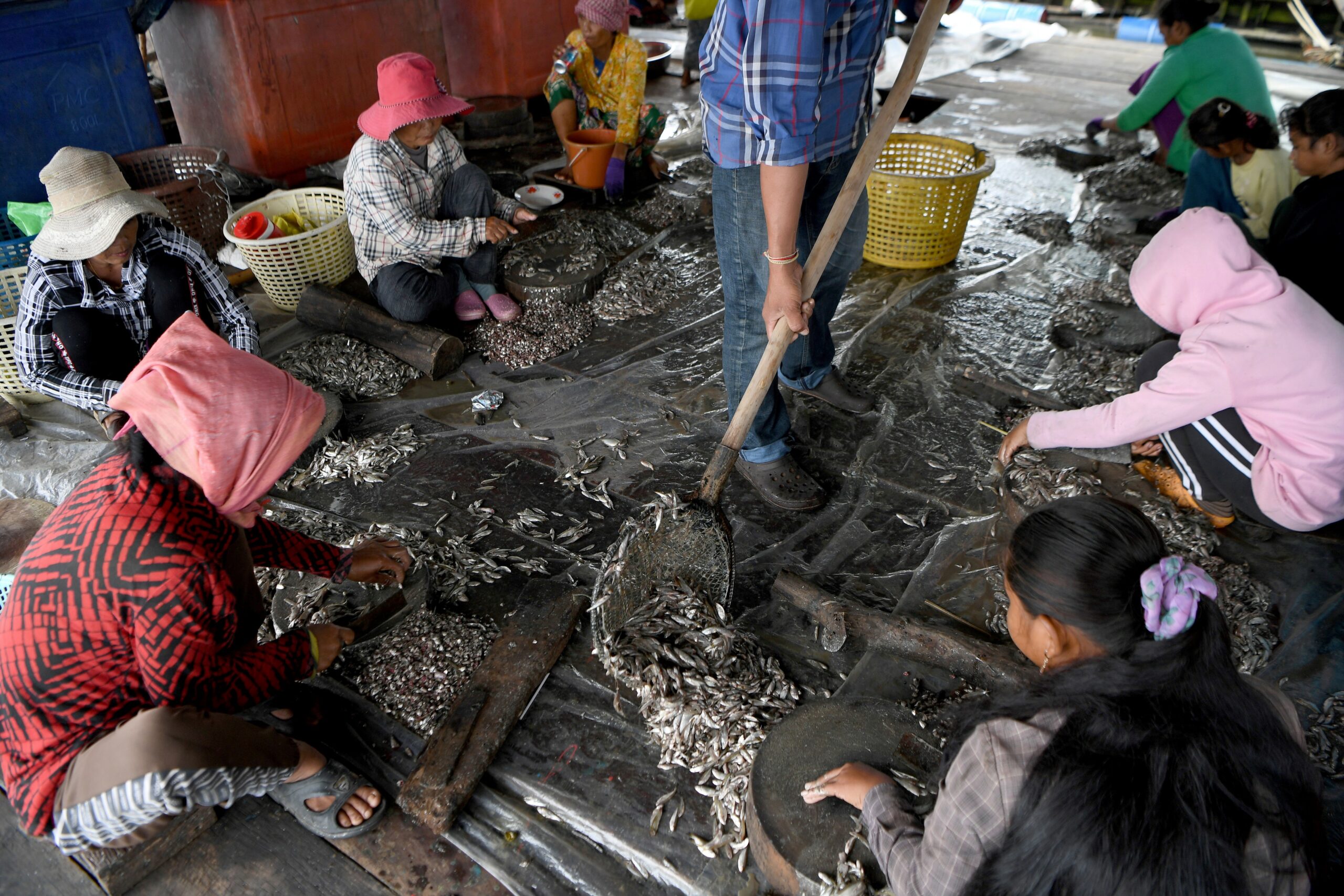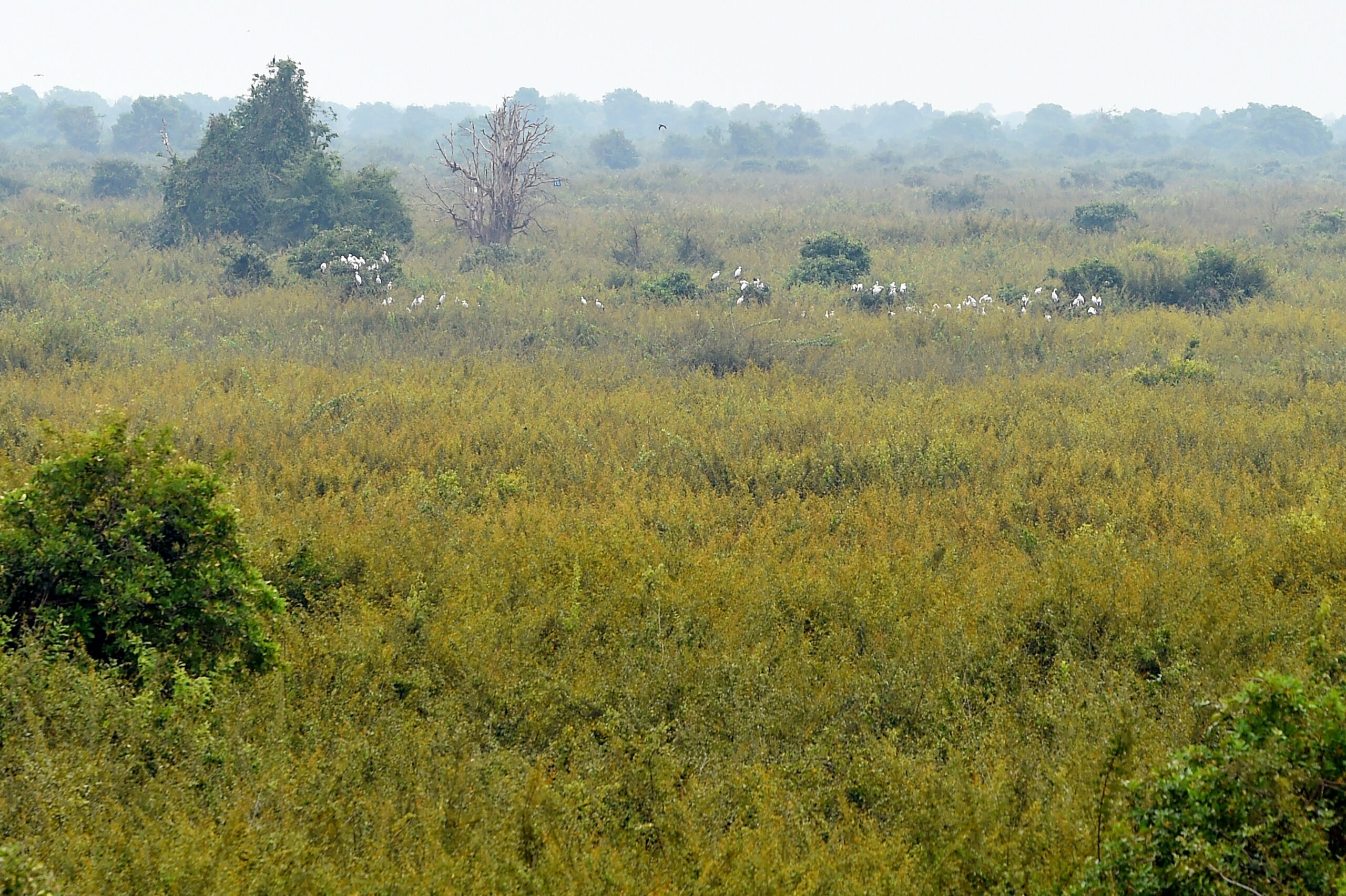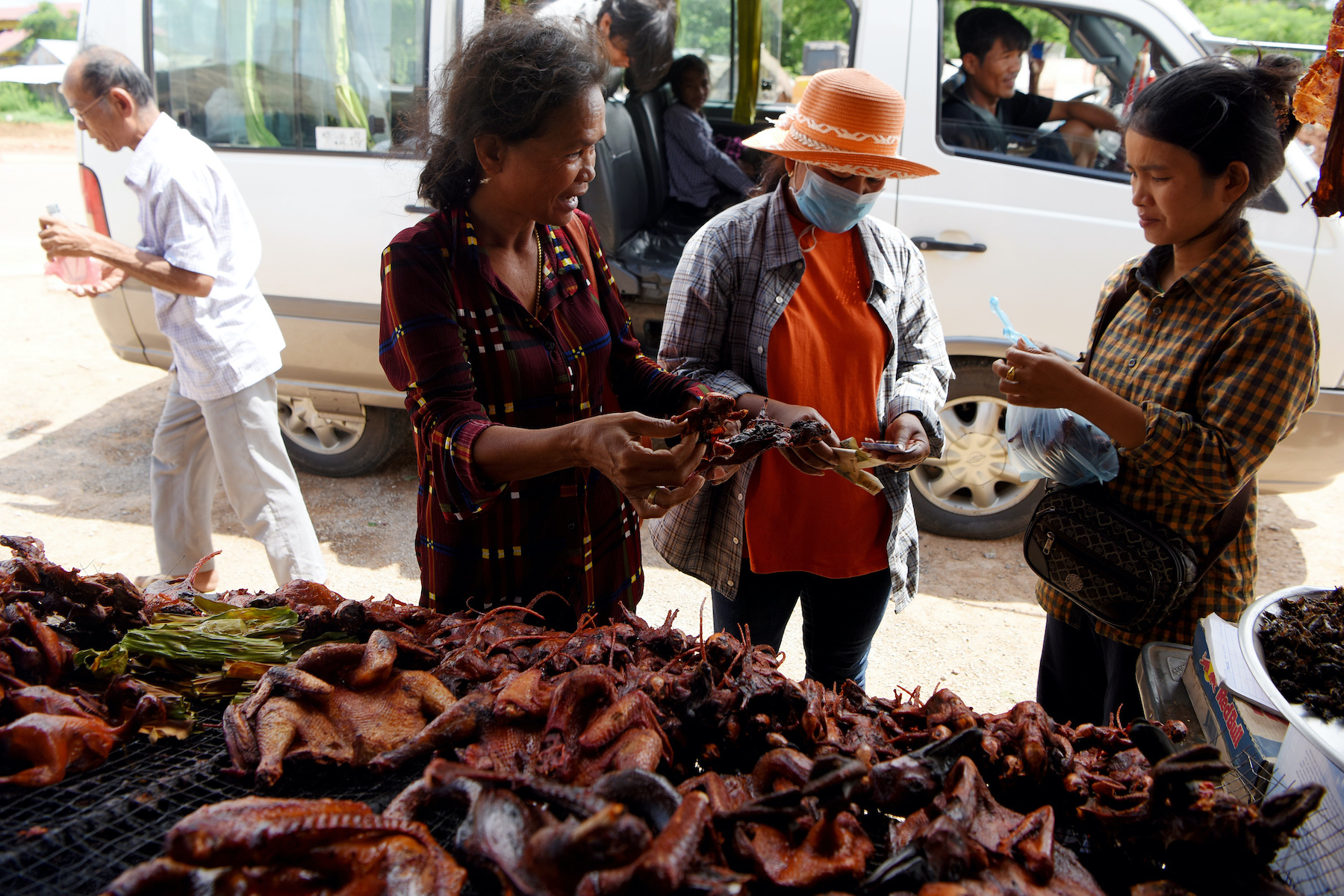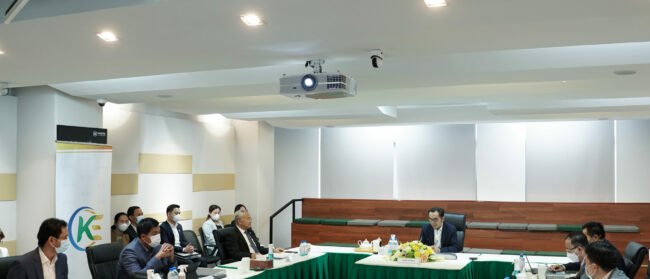Dane was gossiping with a friend at her Battambang home a few years ago when her mother walked in with a strange look on her face.
“You use this secret language to hide from people, but you can’t hide your secret from me – I understand it,” the 36-year-old makeup and hairstylist recalled her mom saying.
The language was pia saa Sor, or “white language,” a version of Khmer with a unique pattern of consonants and vowels used largely among transgender women and queer men. Linguists call such a phenomenon a ‘register’ or ‘argot,’ meaning a language emerging out of communities with a specific common trait.
Yet neither Dane nor her mother realised until then that the other spoke pia saa Sor, nor did they learn it for the same reason.
Dane, who uses one name and is transgender, picked up the register from queer friends as she began living publicly as a woman around age 20. Her mother, a straight, cisgender woman in her 60s, used Sor during the Khmer Rouge regime to talk with other civilians in her camp away from their commanders.
The origins of the language are a mystery even to those who know it intimately. But pia saa Sor has survived for at least 50 years as one of a handful of registers around the world that queer people and other marginalised groups rely on to build community, share jokes and show solidarity in unfriendly environments.
In Cambodia, particularly northern communities of Battambang and Siem Reap provinces, Sor and its sister language Khiev have endured in circles like Dane’s and queer-coded settings such as hair salons and wedding parties. Sor speakers also share stories of its use among non-queer people during Pol Pot’s rule, though how and why people learned it during that era remains unclear.
“Any area where there’s transgender people, they speak these languages,” said 55-year-old Pov, a transgender woman and organiser in Battambang who also uses one name. “I believe only the queer community uses it most and passes the details from one to another.”

In early 20th-century England, sailors, sex workers, actors, queer people and other working-class folks that hung out in brothels and theatres communicated in Polari, a “secret gay language” that was, in reality, neither exclusively gay nor a secret.
Members of England’s theatre subculture frequently used Polari in public to signal their queerness to others and gossip about people nearby, according to Paul Baker, a professor of linguistics and English at Lancaster University. A common phrase, “‘Vada the naff strides on the omee ajax’ meant look at the awful trousers on the man nearby,” he explained in an essay about the language.
In 1990s Indonesia, a widespread register known as Bahasa gay involved adding different sounds and suffixes to traditional Bahasa Indonesian for an entirely new and often whimsical vernacular.
In a society without publicly queer places, a Bahasa gay word or two in an otherwise standard sentence would signal to people at a park or a bar that they were safely around other LGBTQ+ people and help to build community, said Tom Boellstorff, a linguist and anthropologist at University of California, Irvine, who has extensively studied the langauge.
“It doesn’t really act as a secret language, it acts more as a register of saying, ‘This is a gay space, this is a trans space,’” Boellstorff said. “That, socially, is the main thing that registers do – it marks belonging.”
Pia saa Sor and pia saa Khiev follow a similar convention, incorporating sounds from the words Sor and Khiev to each Khmer word to make them indecipherable to outsiders, especially when spoken at a clip.
For Dane and Pov, Sor is the language of choice with friends in everyday settings, but also when they want to react to an offensive comment or tell a joke around non-queer people.
“We use pia saa Sor to express our true feelings,” Dane said.
Ideas about gender identity have historically included wiggle room outside the binary in Cambodia, where some transgender people experience a certain level of tolerance in their communities. But that’s often overshadowed by a harsh heterosexual marriage culture, stigma and discrimination, according to a 2016 report from the Cambodian Center for Human Rights.
A handful of Khmer linguists and scholars in Cambodia and abroad either did not respond or said they were not familiar with Sor.
In a brief paragraph in a 2020 Brown University thesis paper, Tabitha Cubol Payne wrote that Sor and Khiev suggest “queer communities’ need for separatism, flagging that oppression might have played a role in their lives” but also “queer people’s generative and creative responses to social marginalization.”
Some queer elders date the origins of the language back to gay men during French colonisation, according to Srun Sorn, a prominent LGBTQ+ organiser in Cambodia.
“I don’t know who created it. There’s no information about where the language came from or how it worked,” Pov said.
As a 10-year-old living in a part of Battambang that became Banteay Meanchey, Pov sometimes overheard soldiers using the Sor language at her forced labour camp shortly after the Khmer Rouge came to power.
Listening to the language daily as she worked in the rice paddy, Pov learned enough Sor to understand the soldiers, but it wasn’t until the 1990s – renting a house with a group of six other transgender women – that she began to associate it with the queer community, sometimes teaching newcomers the basics on a whiteboard.
Her experience mirrors what others in the queer community have discovered over the years, often to their great surprise: Even as transgender women consider themselves the contemporary keepers of pia saa Sor, older generations have also been known to use it in circumstances unrelated to queerness.
In a different part of Battambang province, Dane’s late mother also learned the language during the Cambodian genocide from 1975 to 1979. But in her case, civilians reverted to Sor when they planned to steal food or otherwise organise themselves without tipping off Khmer Rouge commanders, she told her daughter.
Transgender communities have developed new iterations of Sor. Pia saa Khiev emerged over the past decade as an even more in-group way of communicating. Smaller circles of friends also have built registers unique to their groups that follow a similar structure and likewise tend to be named for the sound added to each word.
“This language isn’t considered a magnificent language for Cambodians to learn,” Dane said with a wave of the hand. “It is just a language we use to communicate in our group.”
Still, Sor and Khiev aren’t a secret. All of Dane and Pov’s non-queer friends and family – and even the local authorities – are well aware of its existence, though the women are conscious of where they use it to avoid misunderstandings. Recently Dane and a few friends were hired to do makeup for a wedding and made small talk in pia saa Sor while they worked.
“The bride’s and the groom’s family thought we were gossiping,” she said. “Whenever we spoke after that, we would double-check to make sure it would not affect others.”

Queer languages tend to die off for two reasons: The languages are rarely written or studied, and as people become less marginalised from the mainstream, in-group languages vanish as a relic of a crueller era.
Polari is no longer spoken and has been preserved in British memory through pop culture such as a 1960s radio show. While elements of Bahasa gay have been incorporated into mainstream slang, the langauge is otherwise confined to niche scholarly interest.
“Very rarely is it captured, because people just don’t have the time, and it really gets lost,” Boellstorff said. “It’s really a shame.”
In Battambang, pia saa Sor and pia saa Khiev have held on as tight-knit, intergenerational communities continue to provide young trans people with a social landing place when they come out.
As to whether they worry about non-queer people taking over Sor or Khiev, Dane and Pov shook their heads: the languages will keep evolving.
“I’m happy that people use it,” Pov said.


